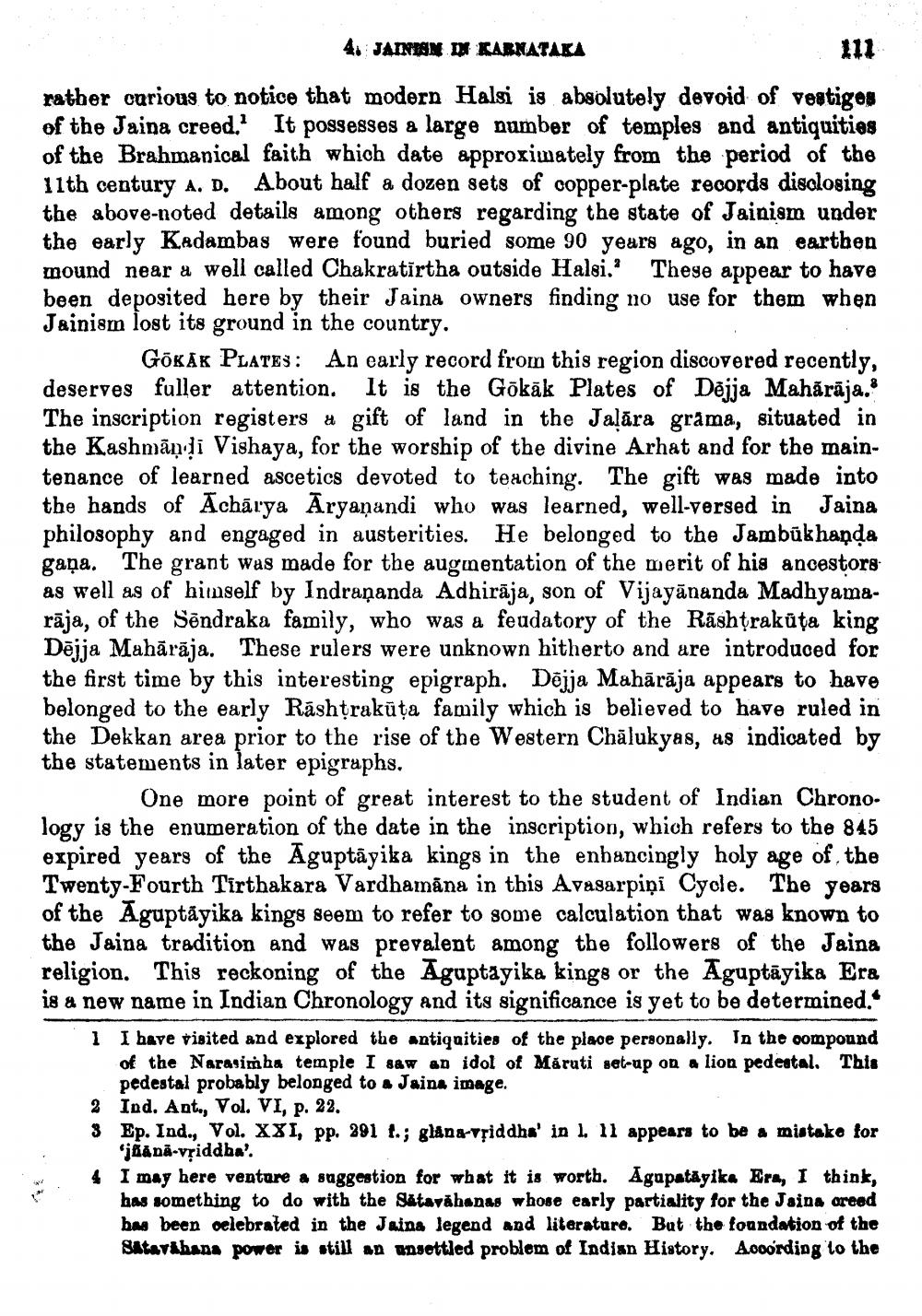________________
4. JAINKON DY KARNATAKA
111 rather curious to notice that modern Halsi is absolutely devoid of vestiges of the Jaina creed. It possesses a large number of temples and antiquities of the Brahmanical faith which date approximately from the period of the 11th century A. D. About half a dozen sets of copper-plate records disclosing the above-noted details among others regarding the state of Jainism under the early Kadambas were found buried some 90 years ago, in an earthen mound near a well called Chakratirtha outside Halsi. These appear to have been deposited here by their Jaina owners finding no use for them when Jainism lost its ground in the country.
GÕKÁK PLATEs: An early record from this region discovered recently, deserves fuller attention. It is the Gōkāk Plates of Dējja Mahārāja.” The inscription registers a gift of land in the Jalāra grama, situated in the Kashmānļi Vishaya, for the worship of the divine Arhat and for the maintenance of learned ascetics devoted to teaching. The gift was made into the hands of Acharya Aryaņandi who was learned, well-versed in Jaina philosophy and engaged in austerities. He belonged to the Jambūkhanda gaņa. The grant was made for the augmentation of the merit of his ancestors as well as of himself by Indrananda Adhirāja, son of Vijayānanda Madhyamarāja, of the Söndraka family, who was a feudatory of the Rāshtrakūta king Dējja Mahārāja. These rulers were unknown hitherto and are introduced for the first time by this interesting epigraph. Dējja Mahārāja appears to have belonged to the early Rashtrakūta family which is believed to have ruled in the Dekkan area prior to the rise of the Western Chālukyas, as indicated by the statements in later epigraphs.
One more point of great interest to the student of Indian Chrono. logy is the enumeration of the date in the inscription, which refers to the 845 expired years of the Āguptāyika kings in the enhancingly holy age of the Twenty-Fourth Tirthakara Vardhamana in this Avasarpiņi Cycle. The years of the Āguptāyika kings seem to refer to some calculation that was known to the Jaina tradition and was prevalent among the followers of the Jaina religion. This reckoning of the Aguptayika kings or the Aguptāyika Era is & new name in Indian Chronology and its significance is yet to be determined.*
1 I have visited and explored the antiquities of the place personally. In the compound
of the Narasimha temple I saw an idol of Măruti set-up on a lion pedestal. This
pedestal probably belonged to a Jaina image. 2 Ind. Ant., Vol. VI, p. 22. 3 Ep. Ind., Vol. XXI, pp. 291 t.; glans-vriddha' in 1 il appears to be a mistake for
jšanā-vșiddha'. 4 I may here ventare a suggestion for what it is worth. Agapatayika Ers, I think,
has something to do with the Satavahanas whose early partiality for the Jaina creed has been celebrated in the Jaina legend and literature. But the foundation of the Satavihana power is still an unsettled problem of Indian History. Acoording to the




